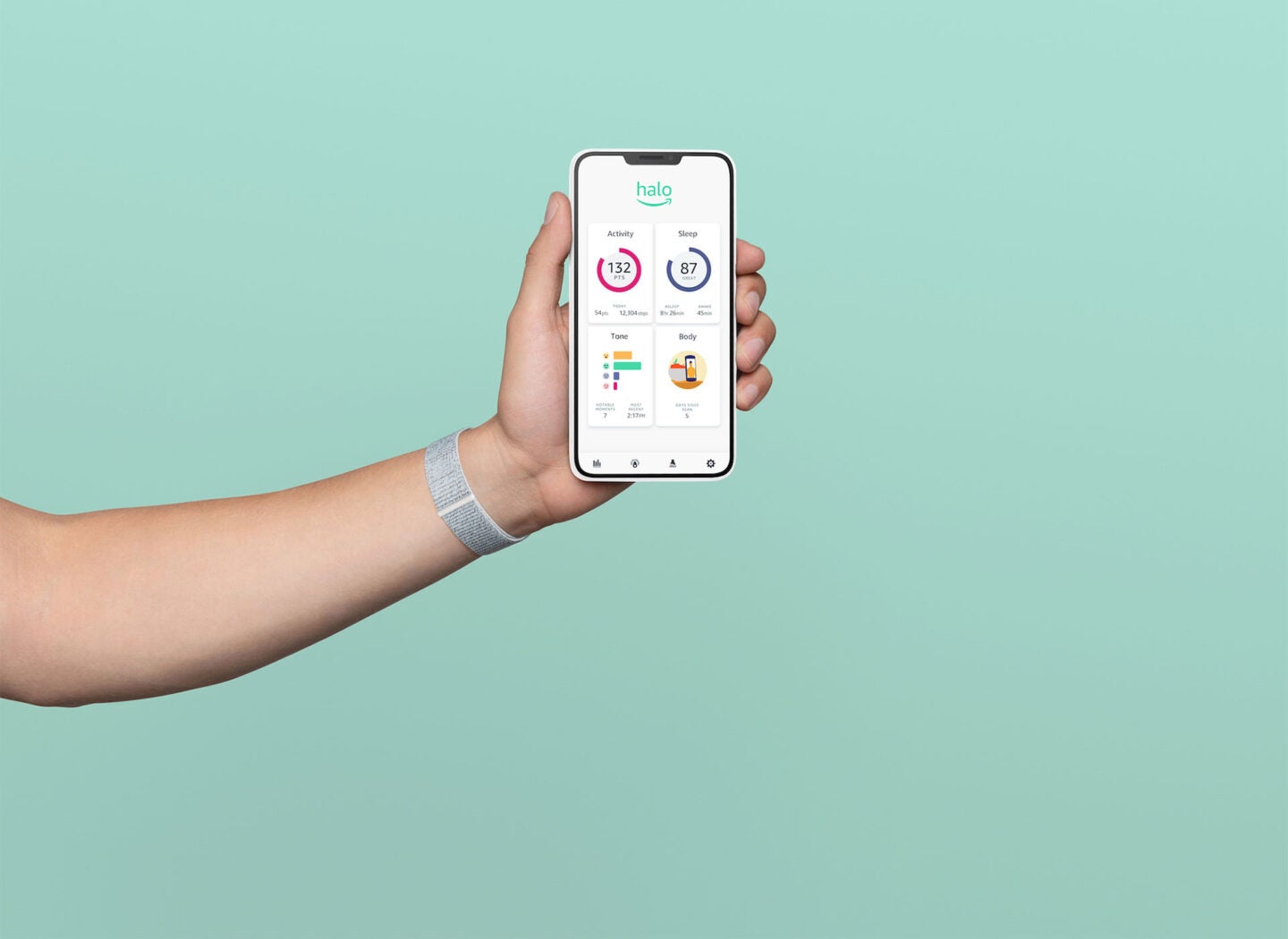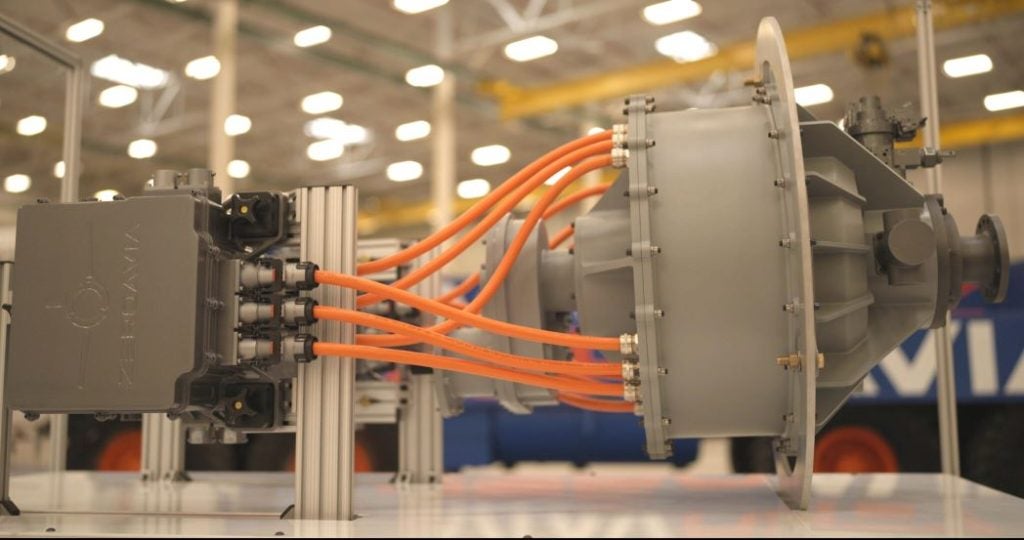
Amazon has officially entered the wearable device market, with the launch of its new wellness service Amazon Halo, which combines “a suite of AI-powered health tools” with the Amazon Halo Band.
The service provides insights into the user’s wellness and, using a small sensor capsule, generates “highly accurate information”, measuring heart rate and temperature. It also features an accelerometer as well as two microphones.
Unlike the popular FitBit or Apple Watch, the Halo Band does not have a screen, enabling it to be “distraction free” according to the e-commerce giant.
The accompanying Amazon Halo app is “designed to give customers a comprehensive understanding of their health and wellness”, with features such as Activity, which awards users points based on how much they move, Sleep, which measures time asleep and time awake, and Labs, which is designed to help users form healthier habits.
Amazon Halo: Novel features
However, while these features are typical of fitness and health wearables, it may be the screenless device’s more novel features that will enable it to compete with well-established players in the market – or deter some users unsettled by some of its more advanced capabilities.
One of Halo’s more unusual features is its Tone option. This opt-in feature uses machine learning to “analyse energy and positivity” in a user’s voice, designed to help them understand how they may come across to others by capturing short samples of speech throughout the day.
How well do you really know your competitors?
Access the most comprehensive Company Profiles on the market, powered by GlobalData. Save hours of research. Gain competitive edge.

Thank you!
Your download email will arrive shortly
Not ready to buy yet? Download a free sample
We are confident about the unique quality of our Company Profiles. However, we want you to make the most beneficial decision for your business, so we offer a free sample that you can download by submitting the below form
By GlobalDataMeanwhile, using “computer vision and machine learning”, Halo’s Body feature allows users to measure their body fat percentage using the camera on their phone to create a 3D model of their body that can be used to track changes in weight.
“Health is much more than just the number of steps you take in a day or how many hours you sleep,” said Dr Maulik Majmudar, principal medical officer at Amazon Halo. “Amazon Halo combines the latest medical science, highly accurate data via the Halo Band sensors, and cutting-edge artificial intelligence to offer a more comprehensive approach to improving your health and wellness.”
Amazon Halo will initially cost $64.99 including 6 months of Halo membership, with customers in the US able to request early access to the product. Beyond this, it will be priced at $99.99, with membership costing $3.99 a month.
The growing wearables industry
With a presence in numerous industries, from grocery delivery to smart home devices, it is hardly surprising that Amazon is adding wearable devices to its ecosystem, especially given its recent interest in moving into the healthcare sphere.
The wearable technology market is expected to reach $51.60bn by 2022, predicted to grow at a rate of 19% over the next four years, and in February, the shipment of wearable devices exceeded 100 million for the first time.
With Google’s parent company Alphabet signing a deal to acquire Fitbit for $2.1bn at the end of last year, and the continued popularity of the Apple Watch, it is clear that big tech is set making its presence in the industry felt.
According to research by Global Data, the Covid-19 pandemic may speed up the adoption of health wearables, with the collection of health data useful for detecting the virus and for track and trace purposes.
In addition, the closure of many gyms around the world under lockdown has seen an uptick in home workouts, which may see an increased interest in fitness-related tech.
“By Amazon moving into the wearables market it shows that the sector is still growing” said Leo Scott Smith CEO and Founder of Tended. “The usage of wearables has increased during the Covid-19 outbreak due to their health monitoring features and growth is expected to continue in the coming years. Amazon has noticed this increase and it’s because of this that they’ve launched a wearable as it continues to expand its hardware portfolio and strengthen its position in the growing health-care sector. Having a global leader like Amazon enter the wearables market can shift its dynamic and can force leaders, including Fitbit and Apple, to adapt their products, continuing to innovate and create better features to stay ahead of the competition.”
“Digitally intrusive” tech?
However, where big tech goes, privacy concerns are never far behind.
Following the news of Amazon Halo’s launch, John Graham-Cumming, CTO of Cloudflare tweeted: “Just imagine you’re logged into your Amazon account and your Halo. You’re looking at items on Amazon and an Amazon device is measuring your heart rate. Also it listens to your voice and registers your emotions.”
According to Amazon the Halo app can collect information relating to fitness metrics, body fat composition, demographic data, sleep, and tone of voice, with Halo also collecting engagement data to “improve the Halo service to provide features and content that are most useful for customers”. Users are able to download or delete their Halo health data.
The company has reassured users that “multiple layers of privacy and security are built into the service to keep data safe and in customers’ control” with health data encrypted “in transit and in the cloud”, and body scan images automatically deleted from the cloud after processing. Speech samples are analysed on the user’s phone and automatically deleted after processing and are not listened to by anyone.
It also said that it does not share personally identifiable Halo health data with third party Lab providers without users’ agreement.
However, Safepoint’s CEO, Callum Coombes warned that there is a danger some of its features could be viewed as “digitally intrusive” by some.
“It’s interesting to see the growth of far less physically intrusive hardware like Amazon’s Halo. Something we’ve found at Safepoint is that users are increasingly looking for devices that don’t have screens or that simply work in the background, with the data there to check up on when you want to,” he said.
“However, where the Halo device is less physically intrusive, I can certainly see it as being viewed as somewhat digitally intrusive, even if data such as voice recordings are immediately deleted. I can see myself checking my tone of voice and being mildly concerned when I’m not labelled with the emotion that I’m trying to convey!”
As was the case when the Google-Fitbit acquisition was announced, it is clear that Amazon will have to work to maintain consumer trust when it comes to privacy and health data, or work to create a product so innovative that users are willing to overlook such apprehensions.
With the world’s largest company behind it, the newest addition to the Amazon ecosystem may be able to establish itself in the market, but it remains to be seen how it will compare to the likes of Fitbit and Apple.
Read more: Amazon’s 16% stake in Deliveroo gets approval.





